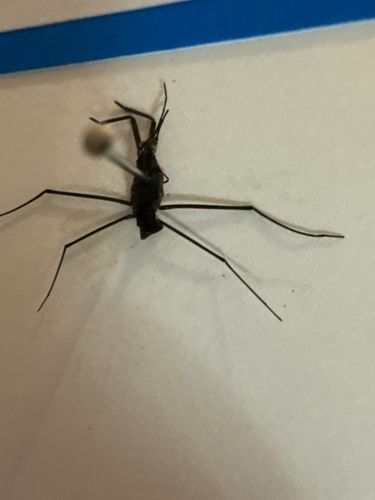Water Strider
Scientific Name: Gerris remigis (or similar species within the Gerridae family)
Order & Family: Hemiptera, Gerridae
Size: Typically "1 cm" to "2.5 cm" (0.4 to 1 inch) in body length, but their legs can make them appear larger.

Natural Habitat
Found on the surface of still or slow-moving freshwater bodies such as ponds, lakes, streams, and marshes. Some species can also be found in brackish or marine environments.
Diet & Feeding
Predatory. They feed on insects that fall onto the water surface, such as mosquitoes, flies, and other small invertebrates. They detect ripples caused by struggling prey and use their piercing-sucking mouthparts to extract fluids from their victims.
Behavior Patterns
Water striders are well-known for their ability to 'walk' on water, supported by the surface tension due to their specialized, non-wettable legs. They are agile predators, quickly skating across the water to capture prey. They undergo incomplete metamorphosis, with nymphs resembling smaller versions of the adults. Most species are gregarious, often found in groups.
Risks & Benefits
Benefits: Water striders play a beneficial role in ecosystems by controlling populations of small insects, including mosquito larvae and pupae that emerge from water. They are harmless to humans and are an important part of the aquatic food web, serving as prey for fish and birds. No known risks to humans.
Identified on: 10/18/2025